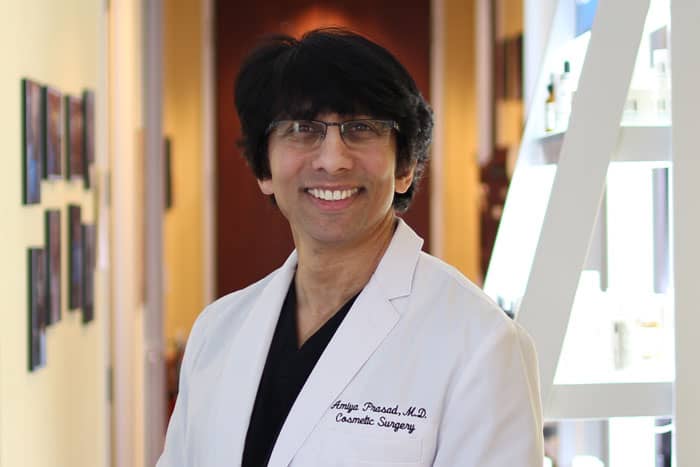Stable Double Eyelids Without Surgery - Why It Won’t Work
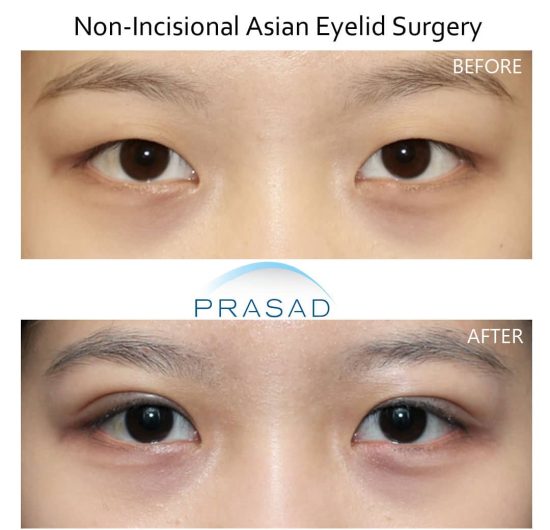
It is generally recognized that half of Asians, including those of Chinese, Japanese, and Korean origin, are born without an eyelid crease, also known as a monolid. Many people prefer an eyelid crease, often known as a double eyelid, because it makes the eyes appear bigger and brighter.
I am frequently asked if an eyelid crease can be made without surgery. I’ll describe how an eyelid crease forms naturally, and how I help patients who want double eyelids.
I often perform all types of cosmetic eyelid procedures, including various types of Asian double eyelid surgery. I also frequently perform non-surgical eyelid procedures, such as cosmetic fillers for sunken eyes.
In addition, I use laser and radiofrequency treatments to enhance and tighten eyelid skin, as well as platelet-rich plasma (PRP) for eyelid skin rejuvenation. Looking across all ethnicities, it is obvious that the majority of non-Asian persons have a natural eyelid fold.
How an Eyelid Fold is Created Naturally
An eyelid fold occurs naturally when fibers from the levator muscle, which lifts the eyelid, join to the top eyelid skin. This section of the skin-to-muscle link is where the eyelid skin folds, forming a natural eyelid crease. People born without an eyelid crease lack this form of skin-to-muscle connection.
Some people may have several yet shallow or undefined creases. Others have a crease that appears and disappears, due to weak eyelid muscle.
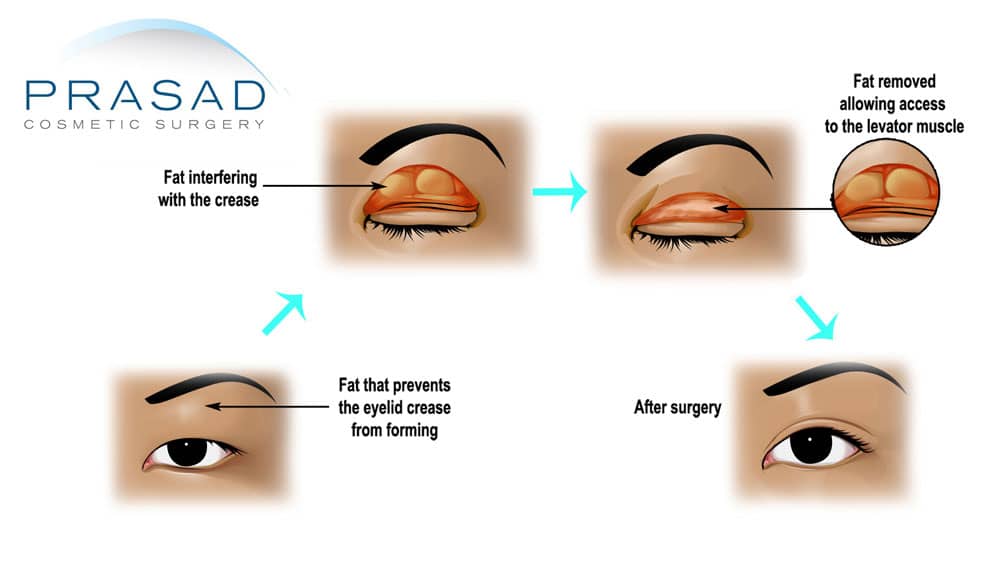
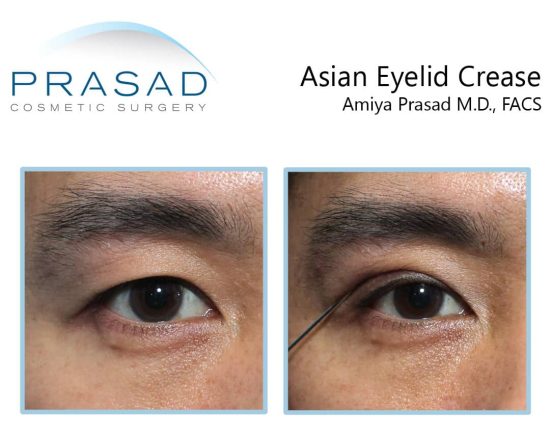
The crucial point to grasp is that these connections are internal between the skin and the muscle, thus surgery is the only way to make a connection or strengthen them.
Can I Get Double Eyelids Without Surgery?
Unfortunately, there is no non-surgical way to generate a skin-to-muscle link, such as injectable fillers or Botox. Although lasers can be used for a variety of purposes, their exterior use cannot produce the internal link required for double eyelid surgery.
So, what do I do during practice? The operations I recommend to my patients are based on anatomic and tissue quality criteria.
During consultation, I help my patients comprehend what a prospective result would look like by raising the eyelid skin with a tool or a Q-Tip and demonstrating how nature would have generated a crease given a patient’s specific anatomy.
Non-Incisional Double Eyelid Surgery
The non-incisional strategy allows you to establish a defined crease, and also applies to having several shallow creases. In general, for younger persons with no redundant eyelid skin or prolapsed fat, sutures are threaded through small perforations in the eyelid to make a skin-to-muscle connection, resulting in a crease. This is a minimally invasive operation known as non-incisional Asian double eyelid surgery, or Asian blepharoplasty.
For those who have significant hooding over their eyes, which is common in older patients, some of the excess eyelid skin must be removed.
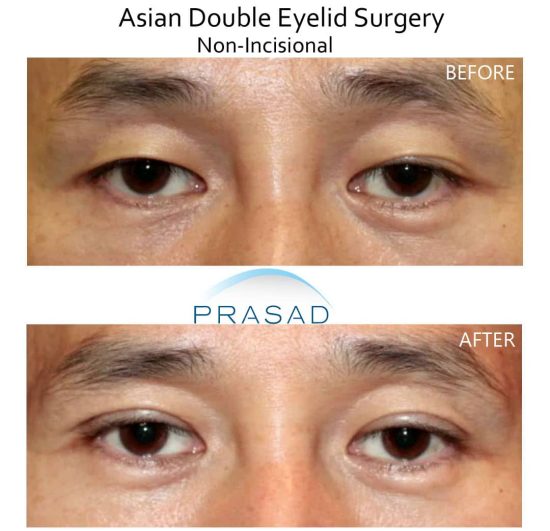
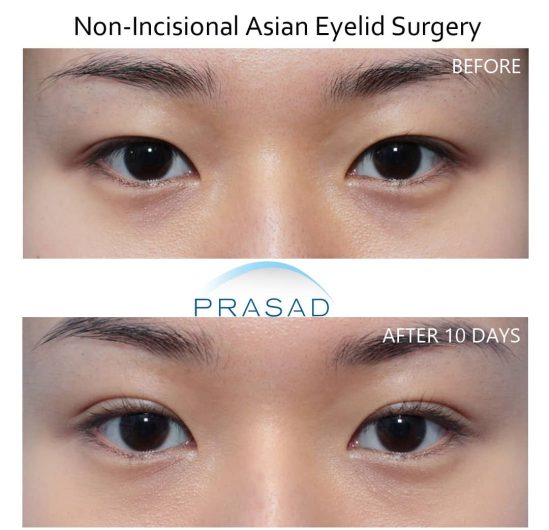
The art is in establishing the skin removal pattern that will result in a natural double eyelid fold.
In contrast, non-Asian eyelid surgery does not typically result in a double fold. Design and precise measurements are crucial in Asian double eyelid surgery. The presence of prolapsed fat can also be treated to prevent it from interfering with skin-to-muscle sutures.
I perform my patients both non-incisional and incisional Asian double eyelid surgery under local anesthesia, with LITE IV sedation. My patients usually leave our office feeling great, and go home to rest for a few days. This contrasts with the use of general anesthesia, which is associated with higher risk and longer recovery times. Our patients frequently return to work a week following surgery, with minimal swelling.
There are non-surgical ways people use to create temporary eyelid creases. These include eyelid tape, or eyelid glue, but these don’t create long lasting creases.
Can Eyelid Tape Ruined My Eyes?
Adhesives can irritate and even damage your sensitive eyelid skin, which is only 0.5mm thick. Adhesives can irritate and even damage your sensitive eyelid skin, which is only 0.5mm thick. Repeated eyelid manipulation may cause the levator muscle to stretch, leading to eyelid ptosis, which is when the eyelid droops. If ptosis develops, eyelid ptosis surgery will be required, increasing the complexity and cost of Asian double eyelid surgeries.
Conclusion
In conclusion, creating a lasting and defined eyelid crease can really, only be done with surgery. The combination of art and science of Asian double eyelid surgery cannot be overstated. In my opinion, the goal is to have a safe surgery with as predictable results as possible, while maintaining a natural appearance as if you’ve always had a double eyelid fold.
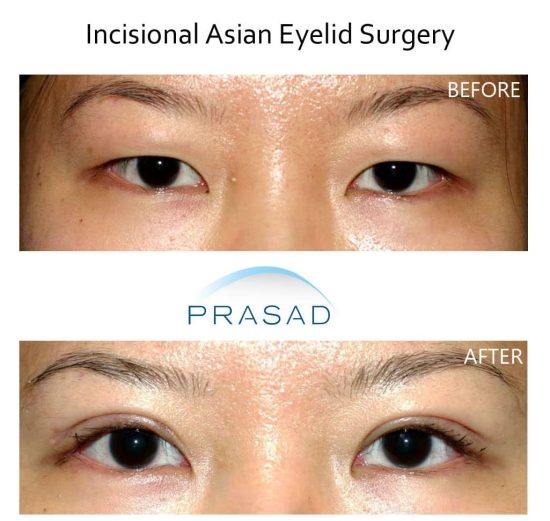
Double Eyelid Surgery Manhattan NYC and Long Island New York
Dr. Amiya Prasad is a Board-certified cosmetic surgeon, and a Fellowship-trained oculofacial plastic and reconstructive surgeon. He’s been practicing for over 25 years in New York City, and Long Island.
Schedule a consultation with Amiya Prasad MD to determine the best procedure for you. Contact us at our Manhattan office at (212) 265-8877 or Garden City Long Island Office at (516) 742-4636 or Vienna, Virginia at (703) 356-1336 / (703) 821-2683 or fill up the form below.

